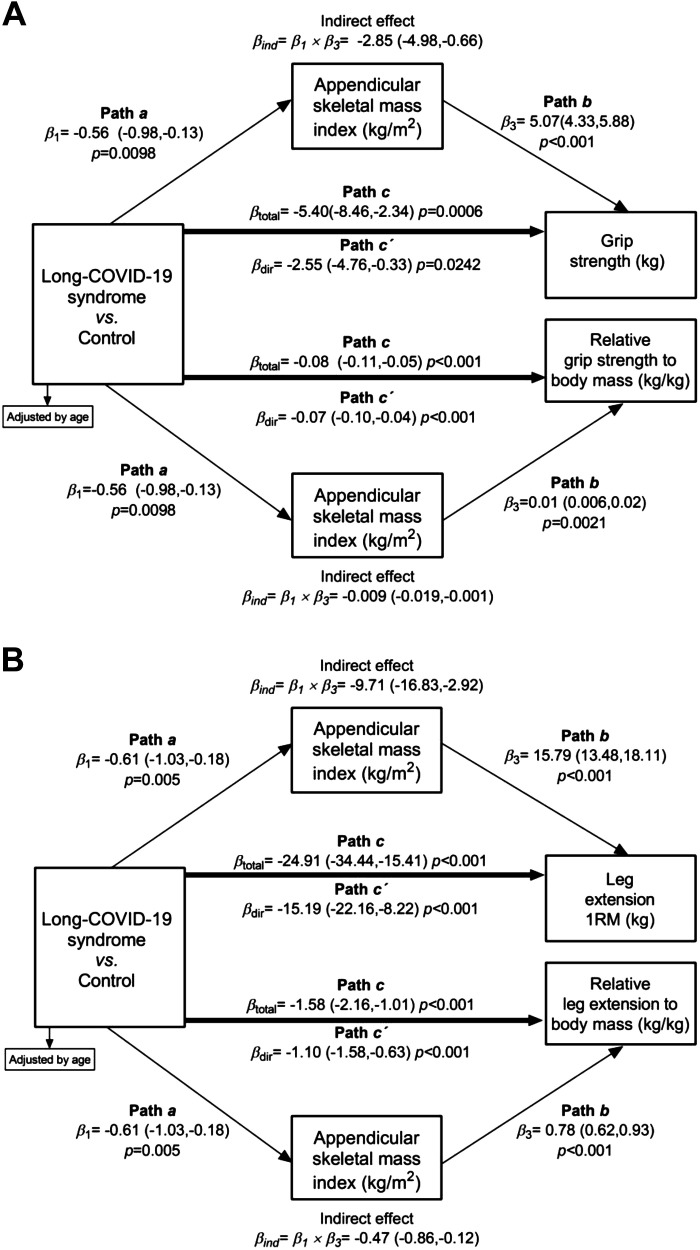Figure 4.
Effects for the relationship between control group vs. long-COVID-19 syndrome for absolute and relative grip (A) and leg (B) strength levels, mediated through appendicular lean mass index. Linear regressions models were fitted according to the procedures outlined by Baron and Kenny (34) to assess whether the association between control group vs. long-COVID-19 syndrome and absolute and relative grip/leg strength levels was mediated by appendicular lean mass index. The first equation (β1, path a) regressed the mediator (appendicular lean mass index) on the independent variable (control group vs. long-COVID-19 syndrome). The second equation (β3, path b) regressed the dependent variable (absolute or relative grip/leg strength levels) on the independent variable. The third equation regressed (βtotal, path c) the dependent variable on both the independent variable and the mediator variable. The direct effect, denoted as (βdir, path c′), is the effect coefficient of independent variable in a linear regression and the mediator on the dependent variable. The indirect effect is the component of the total effect that is mediated through appendicular lean mass index (c–c′) in the relationship between dependent variable and the independent variable; it is denoted by β1 × β3 (βind).

